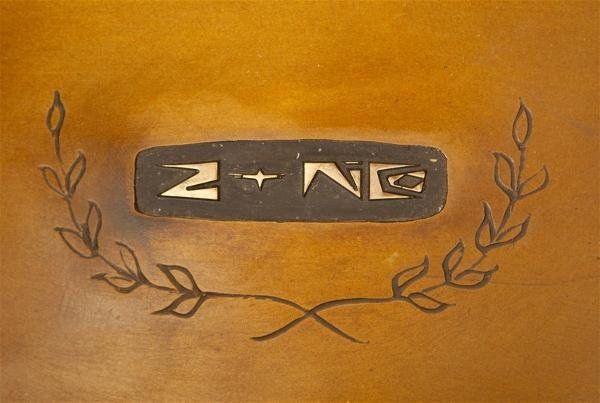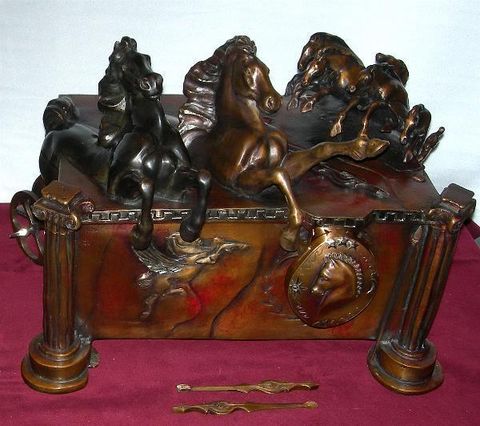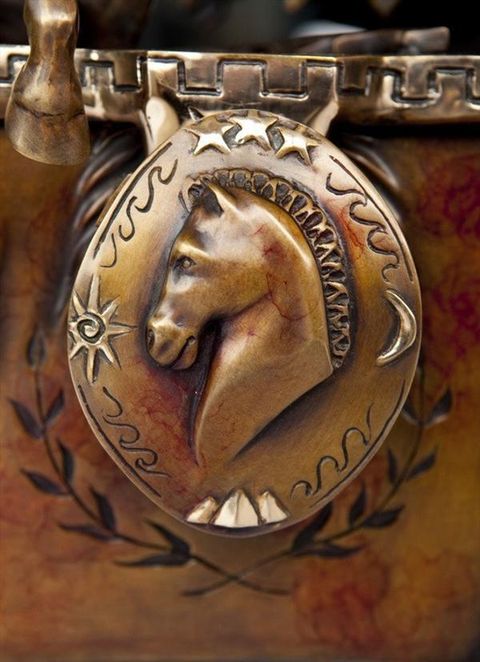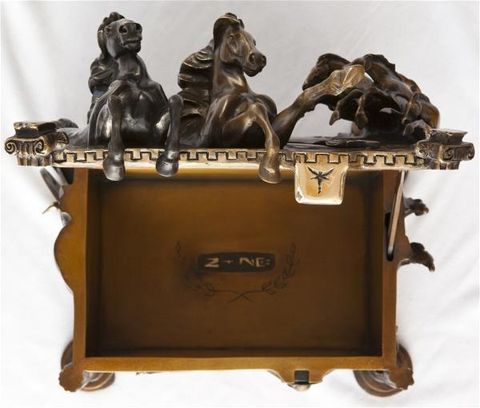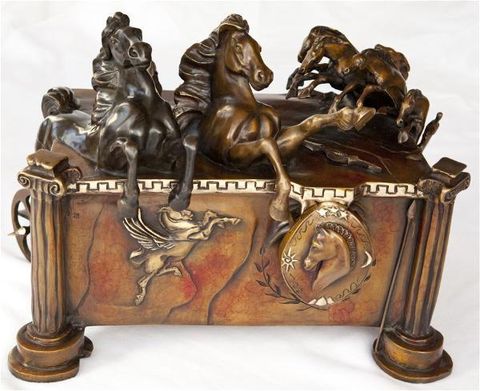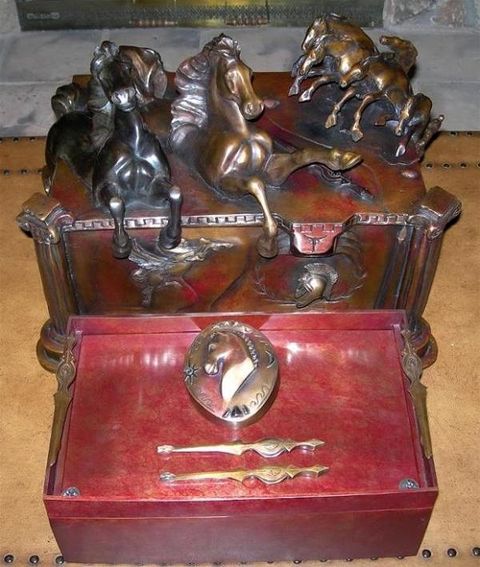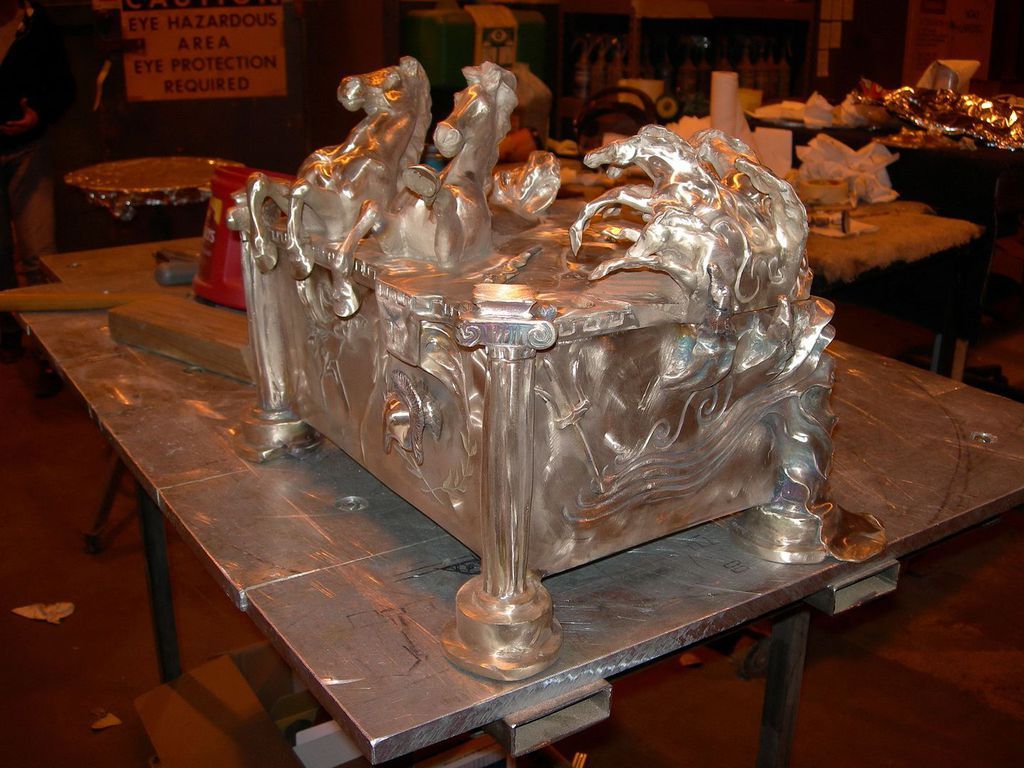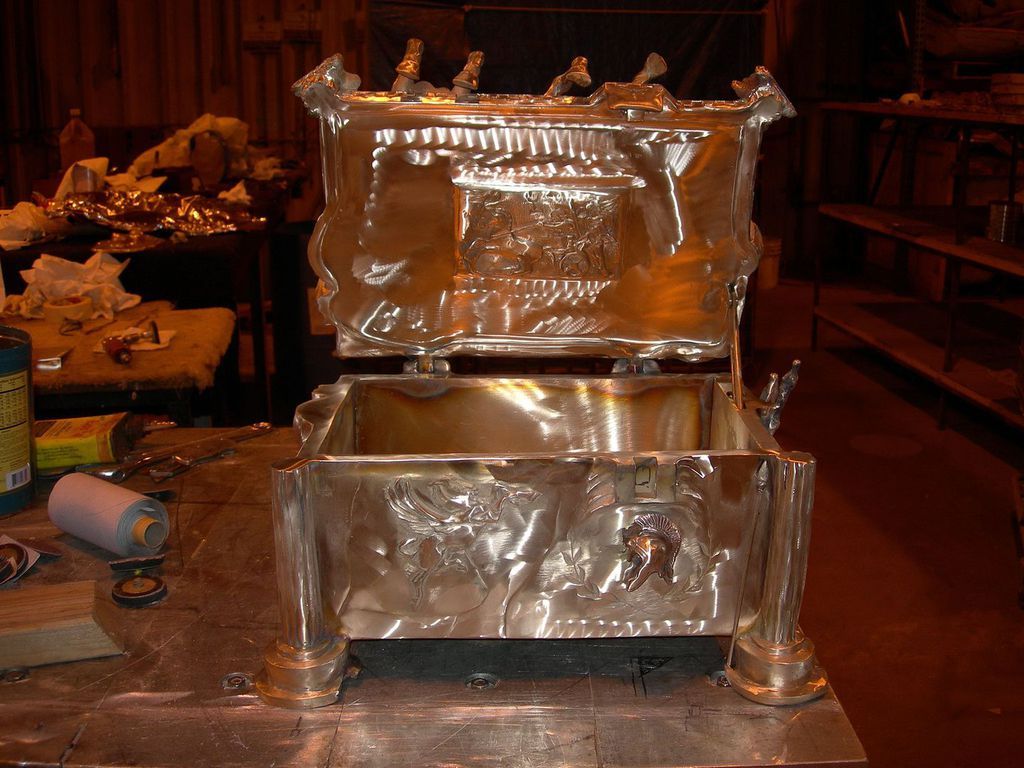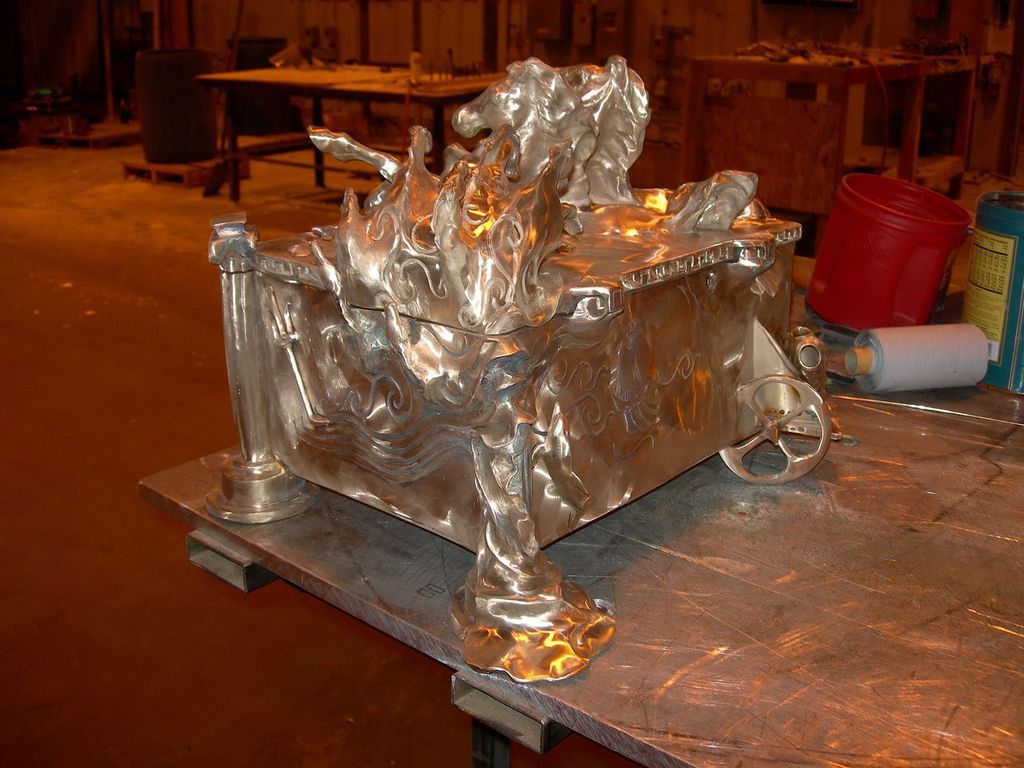The Immortal Stallions (of Greek and Roman Mythology) is a bronze Heirloom StrongBox that embraces the classic style of ancient Greece and the noble position of horses in myth and history. The second design of museum quality functional art by Z Nico is created through a collaboration of Mike Nicolaou, Ronnie Frostad, Csaba Letay and the foundry artisans of Frostad Atelier www.frostadatelier.com. Inspired by Homer's epic poems, The Iliad and The Odyssey, the sculpture displays many elements that were chosen for their artistic beauty, historical significance and, most importantly, for their underlying meaning and salient symbolism.
The Iliad is the story of the Trojan War and the greatest warrior-champion of his time, Achilles (Akhilleus). It chronicles the tenth and final year of the engagement to retrieve the abducted Spartan Queen, Helen, describing in poetic detail the battles, conflicts and characters that have been woven into western folklore.
The Odyssey continues the narrative started in The Iliad and tells the tale of Odysseus (Ulysses) and his ten year journey home to Ithaca following the end of the Trojan War. Unlike Achilles who was the ultimate warrior in physical combat, Odysseus was the cleverest of the Greek philosopher-kings. His tactical idea to build the Trojan Horse was the strategic key to the Greek victory and subsequent end of the campaign.
The Immortal Stallions displays several stories from Greek Mythology that included horses. In ancient times, much like today, horses were the symbols of wealth, status, and power. The two horses that prominently stand on the top of the safe are Xanthos (Xanthus) and Balios (Balius). The Iliad denotes that these magnificent stallions were a wedding gift from Poseidon (Neptune), God of the Sea and Horses, to King Peleus of Aegina and his wife, the Ocean Goddess, Thetis.
Peleus and Thetis were the parents of Achilles. They gave Achilles these mighty steeds to draw his chariot during his numerous battles. Xanthos and Balios were the stallions that pulled Achilles' chariot in the Trojan War. It was written that these "Immortal Horses" (Hippoi Athanatoi) had never experienced the loss of a loved one and following the death of Petroclus at the hand of the Trojan Prince, Hector, the stallions wept at the passing of their caretaker. Petroclus was Achilles' favorite cousin. He impersonated Achilles and guided the Myrmidones into battle when Achilles refused to fight for the Greek leader, Agamemnon. It was the death of Petroclus that drove Achilles into a rage of anger that eventually led to the legendary clash with Hector.
“Poseidon's Horses” are also depicted on the top of the Heirloom StrongBox. The horses emerging from the waves on the right rear of the safe were inspired from a painting by Walter Crane painted 100 years ago. Among these stallions is Zephyros (Zephyrus), who was the sire of Xanthos and Balios. (Xanthos and Balios were born from Podarge, a harpy. Harpies were winged spirits in Greek mythology.) Zephyros was also one of the Wind Gods (Anemoi). The four directional Wind Gods took the form of horses when they drew the chariot of Zeus (Jupiter), King of the Greek and Roman Gods.
Pegasus was fathered by Poseidon and sprang to life from the neck of Medusa. He came from the sea, walked the earth, flew the skies and ultimately resided in the heavens where a constellation was named on his behalf. Pegasus carried thunder and lightning for Zeus. His image on the safe represents nobility, inspiration, victory and a strength that reaches beyond the mortal realm. We chose Pegasus to transport Achilles and his two coins for his meeting with the “Boatman” in the afterlife. Also shown on the front of the sculpture are Achilles' helmet, a laurel wreath, wings, Nike / Niki (Victoria) and Achilles' shield that functions as the lock for the Heirloom StrongBox.
Achilles' armor, helmet, weapons and shield were made by the God of Fire, Hephaestus (Vulcan), at the request of Thetis. Hector had taken Achilles' original panoply from the dead body of Petroclus. This divinely-wrought replacement armament was extremely majestic and would eventually be awarded to the bravest Greek warrior following the death of Achilles. That honor went to Odysseus after a competition with the mighty Ajax. Odysseus in turn chose to give the panoply to Achilles' son, Neoptolemus. It is said that Alexander the Great was a descendant of Neoptolemus and carried Achilles' spear along with a copy of the Iliad on his many conquests. The shield, helmet and body armor symbolically represent power and protection.
The lock for the Immortal Stallions is the Shield of Achilles. The design is an interpretation of the description that Homer presented in the Iliad. We show the profile of Pegasus and surround him with the sun, moon, stars, earth and sea. Every lock and sword key is hand made and requires a highly skilled artisan to insure the proper engineering and fit. The lock and key are crafted in art quality bronze and weighs approximately five pounds.
The wings on the front of the safe reference the heavens and the ability to fly or “elevate” from the physical realm. The winged Pegasus and Nike have the same purpose as the angels that followed them in the numerous world cultures and religions. These winged spirits were sentinels and messengers for the ancient Greeks and Romans.
The trident and dolphin relate Poseidon, Thetis and Aphrodite (Venus). Along with the starfish and seashells, they add to the nautical link of the Immortal Stallions. The trident is a symbol of power while the dolphin was the bearer of the Gods, savior of heroes and carrier of souls to the “Island of the Blessed”. Mythology tied the dolphin to horses and this association is clearly evident at ancient and modern racing venues. You'll see dolphins used to count laps and decorate race tracks.
The ship on the back of the safe has multiple meanings. It was the vessel that took Achilles to the Trojan War. It is also there to reference Odysseus' long trip home to his wife and son. But the most significant reason for the sail boat is to symbolize the journey of spirit and the voyage into the afterlife. The transformation from the worldly to the heavenly, the concept of immortality and eternal existence. The chariots on the chest carried the warriors and gods of ancient Greece. Chariots were the symbol of ruler-ship, spiritual authority and the mastery of heroes and deities.
In the ancient Greek language, “Z” meant that “he or she is alive”. The name “Nico” (Niko) is a derivative of Nike and means to “conquer”, “defeat” or “ be victorious”. Z Nico on the inside of the chest implies that “he or she lives on victoriously”. The laurel wreath re-enforces this meaning. The Greco-Roman world saw the laurel wreath as a symbol of victory, peace, purification, divination and immortality. The prominent placement of the laurel wreaths on the safe are there for aesthetics and significance.
The simplified Greek Key is another design element that serves a dual purpose. Throughout the world we see variations of the Greek Key. It can be found on buildings, clothing, jewelry and art. While most people only think of it as a classic border design, the true intent of this continuous pattern is eternal life and that is our reason for including the element on the Z Nico sculpture.
The Immortal Stallions has Doric columns with Ionic capitals. These columns combine two architectural canonical orders and organizational systems. Along with a contemporary Art Nouveau style that was chosen for the waves, the Immortal Stallions has a classic look that will remain timeless. Our patrons should also appreciate the Baroque Horses that were germane to the time period and region. This functional art heirloom conveys the strength, nobility and harmony of the mightiest steeds and the ancient Greeks and Romans.
The Immortal Stallions measures 20” x 15” x 14” and weighs in excess of 100 lbs. It comes with a secure container insert that is 13.5” x 8.5” x 6” and weighs 20 lbs. Optional trays for jewelry, watches and pens are also available. A cedar wood humidor insert can be ordered as well. The Immortal Stallions is a sculpture that was conceived and produced for people that share our love for horses. It took almost a year to create the statuary and bring it to bronze. It takes approximately two months to make each subsequent Heirloom StrongBox, therefore a very limited number will be made each year. The chest is signed and numbered by Ronnie Frostad. It has the Z Nico and Frostad Atelier hallmarks on the bottom to insure that this is the finest quality bronze safe made anywhere in the world.
